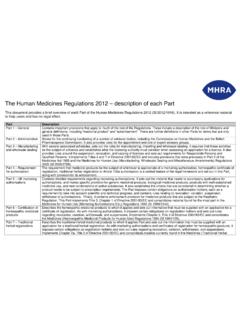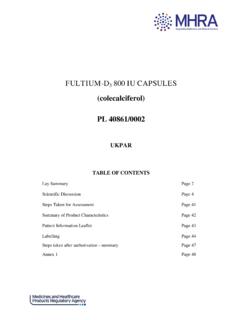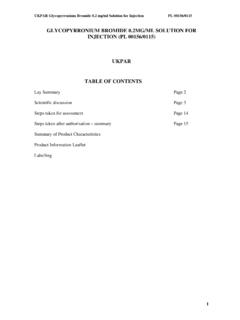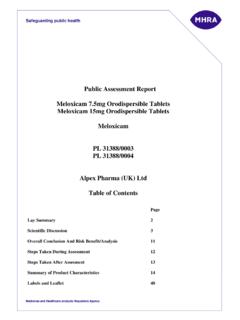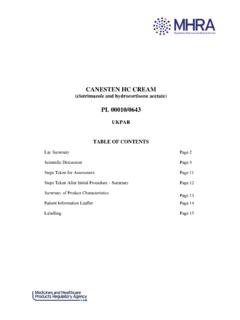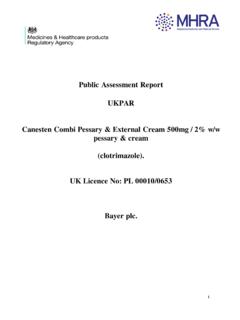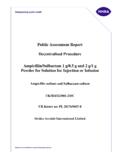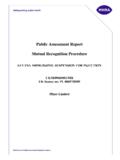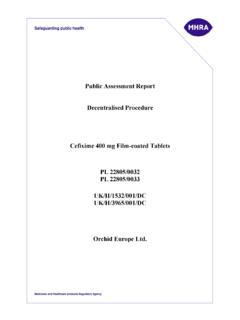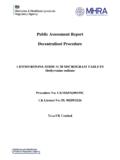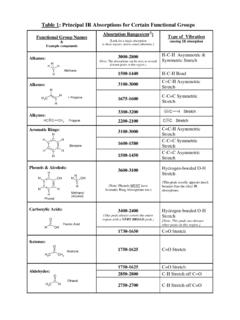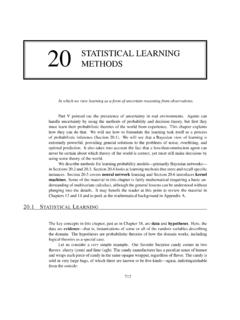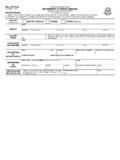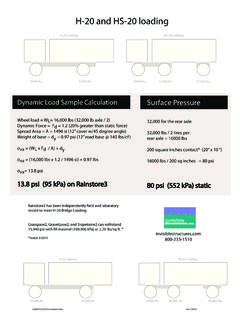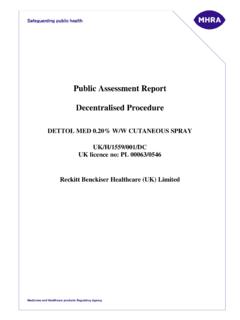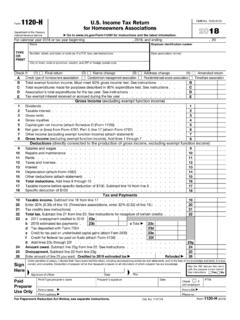Transcription of Fusidic Acid Cream 20 mg/g Cream Procedure No: …
1 Public Assessment Report Decentralised Procedure Fusidic acid Cream 20 mg/g Cream Procedure No: UK/H/3764/001/DC. UK Licence No: PL 34372/0001. Basic Pharma Manufacturing BV. Fusidic acid 20 mg/g Cream UK/H/3764/001/DC. LAY SUMMARY. On 20 January 2012 the Medicines and Healthcare products Regulatory Agency (MHRA). granted a Marketing Authorisation to Basic Pharma Manufacturing BV for the medicinal product Fusidic acid 20 mg/g Cream (PL 34372/0001; UK/H/3764/001/DC).This is a prescription-only medicine (POM) used for the local treatment of skin infections caused by bacteria that are sensitive to Fusidic acid (especially staphylococcus infections) such as impetigo (a weeping, crusty and swollen patch of skin), folliculitis (inflammation of one or more hair follicles), sycosis barbae (infection of the bearded skin), paronychia (infection of the tissue surrounding a fingernail or toenail) and erythrasma (infection with brown, scaly skin patches, especially in the folds of the body).
2 The active ingredient in Fusidic acid 20 mg/g Cream is Fusidic acid , which is an antibiotic (this means that it kills bacteria that cause infections). No new or unexpected safety concerns arose from this application and it was therefore judged that the benefits of taking Fusidic acid 20 mg/g Cream outweigh the risks; therefore, a Marketing Authorisation has been granted. 2. Fusidic acid 20 mg/g Cream UK/H/3764/001/DC. TABLE OF CONTENTS. Module 1: Information about initial Procedure Page 4. Module 2: Summary of Product Characteristics Page 5. Module 3: Product Information Leaflet Page 9. Module 4: Labelling Page 14. Module 5: Scientific Discussion Page 18. 1 Introduction 2 Quality aspects 3 Non-clinical aspects 4 Clinical aspects 5 Overall conclusions Module 6 Steps taken after initial Procedure 3. Fusidic acid 20 mg/g Cream UK/H/3764/001/DC. Module 1.
3 Product Name Fusidic acid 20 mg/g Cream Type of Application Hybrid, Article Active Substance Fusidic acid Form Cream Strength 20 mg/g MA Holder Basic Pharma Manufacturing Burg. Lemmensstraat 352. 6163 JT Geleen The Netherlands Reference Member State (RMS) UK. Concerned Member States (CMS) Belgium, Germany, Luxembourg, the Netherlands and Poland Procedure Number UK/H/3764/001/DC. Timetable Day 210 01 December 2011. 4. Fusidic acid 20 mg/g Cream UK/H/3764/001/DC. Module 2. Summary of Product Characteristics The text below is that agreed at the end of the Decentralised Procedure . The Marketing Authorisation Holder has committed to submitting a Change of Ownership to Focus Pharmaceuticals Limited at the earliest opportunity. Hence, there is no UK Specific Product Licence number on the SmPC or the labelling at this time. The Marketing Authorisation Holder has provided an assurance that the product will not be marketed until the Change of Ownership has been completed.
4 1 NAME OF THE MEDICINAL PRODUCT. { Fusidic acid [Company Name] 20 mg/g Cream } {To be completed nationally}. 2 QUALITATIVE AND QUANTITATIVE COMPOSITION. Each gram contains 20 mg Fusidic acid . Excipient(s): Contains Butylhydroxyanisole mg/gram, Cetyl alcohol mg/gram, and Potassium sorbate mg/gram For a full list of excipients, see section 3 PHARMACEUTICAL FORM. Cream . White, homogenous Cream . 4 CLINICAL PARTICULARS. Therapeutic indications Treatment of non-severe, superficial, non-extensive, primary skin infections caused by microorganisms that are sensitive to Fusidic acid , especially of infections caused by Staphylococcus (see section ). Primary skin infections that may be expected to respond to treatment with Fusidic acid applied topically include: impetigo contagiosa, superficial folliculitis, sycosis barbae, paronychia and erythrasma. Consideration should be given to official guidance on the appropriate use of antibacterial agents.
5 Posology and method of administration Posology Adults and children: Uncovered lesions: apply gently three or four times daily. Covered lesions: less frequent applications may be adequate. Method of administration: Cutaneous use Contraindications Fusidic acid 20 mg/g Cream is contraindicated in patients with known hypersensitivity to Fusidic acid or to any of the excipients used in the product. Special warnings and precautions for use Bacterial resistance has been reported to occur with the use of Fusidic acid . As with all antibiotics, extended or recurrent use may increase the risk of developing antibiotic resistance. Fusidic acid should not be used in infections caused by non-susceptible organisms, in particular, Pseudomonas aeruginosa, see section Extended or recurrent use may increase the risk of developing contact sensitisation. When Fusidic acid 20 mg/g Cream is used on the face, care should be taken to avoid the eyes, because Fusidic acid can cause irritation of the conjunctiva.
6 5. Fusidic acid 20 mg/g Cream UK/H/3764/001/DC. Fusidic acid 20 mg/g Cream contains butylhydroxyanisole, cetyl alcohol and potassium sorbate which may cause local skin reactions ( contact dermatitis). Butylhydroxyanisole may also cause irritation to the eyes and mucous membranes. Interaction with other medicinal products and other forms of interaction No interaction studies have been performed. Fertility, pregnancy and lactation Pregnancy There is inadequate evidence of safety in human pregnancy. Animal studies and many years of clinical experience have suggested that Fusidic acid is devoid of teratogenic effect. There is evidence to suggest that when given systemically, Fusidic acid can penetrate the placental barrier. The use of topical Fusidic acid 20 mg/g Cream in pregnancy requires that the potential benefits be weighed against the possible hazards to the foetus.
7 Breastfeeding Safety in nursing mothers has not been established. When Fusidic acid (as the sodium salt) has been given systemically, levels have been detected in breast milk, but with topical use the possible amount of drug present is unlikely to affect the infant. Effects on ability to drive and use machines Fusidic acid Cream has no or negligible influence on the ability to drive and use machines. Undesirable effects The most frequently reported adverse drug reactions are various skin reactions and in particular application site reactions. Undesirable effects are listed by MeDRA SOC and the individual undesirable effects are listed starting with the most frequently reported. Very common 1/10. Common 1/100 and <1/10. Uncommon 1/1,000 and <1/100. Rare 1/10,000 and <1/1,000. Very rare <1/10,000. Not known (cannot be estimated from the available data).
8 Side effects are classified according to organ system, and within each organ, grouped by frequency. Immune system disorders Rare Hypersensitivity Eye disorders Rare Conjunctivitis Skin and subcutaneous tissue disorders Uncommon: Pruritus Rash including erythematous, maculo-papular and pustular reactions Contact Dermatitis Irritation at site of application (including pain, stinging, burning and erythema). Not known: Urticaria Angiodema Eczema Periorbital oedema Overdose Overdose is unlikely. 6. Fusidic acid 20 mg/g Cream UK/H/3764/001/DC. 5 PHARMACOLOGICAL PROPERTIES. Pharmacodynamic properties Pharmacotherapeutic group: other antibiotics for topical use, ATC code: D06AX01. Active mechanism: Fusidic acid belongs to a unique group of antibiotics, the fusidanes, which act to inhibit bacterial protein synthesis by blocking the lengthening of factor G.
9 This is to prevent it from associating with ribosomes and GTP, thus preventing energy supply to the synthesis process. As it is the only type of drug available in this family of drugs, there have been no reports of cross resistance to Fusidic acid . Resistance mechanism(s): Resistance for Fusidic acid can vary geographically and information about local resistance patterns should be obtained through a local microbiology laboratory. In general, resistance occurs in 1-10 % of Staphylococcus aureus and 10-20 % of coagulase negative staphylococcus. Cross-resistance between Fusidic acid hydrophilic Cream 20 mg/g and other antibiotics has not been reported. Breakpoints: The following MIC values are recommended to distinguish sensitive and non-sensitive germs: S 1. g/ml and R > 1 g/ml. This breakpoint should be used for the systemic use of Fusidic acid .
10 In general, no breakpoints are established for the topical use of antibiotics. Sensitivity: The sensitivity of organisms to Fusidic acid is based on the in vitro sensitivity and plasma concentrations that are achieved after systemic therapy. Local treatment causes higher peak concentrations as compared to plasma. However, it is not known how the kinetics of the Cream after local application may change the effectiveness of the Cream . Commonly Staphylococcus aureus and Staphylococcus epidermis (including susceptible methycillin resistant and beta lactamase producing strains);. species Corynebacterium minutissimum; Clostridium spp.; Peptococcus spp.;. Peptostreptococcus spp.; Neiseria spp.; Bacteroides fragilis. Inherently Streptococcus pyogenes; Streptococcus pneumoniae; Streptococci resistant viridans; most gram negative bacilli including Haemophilus influenza.
